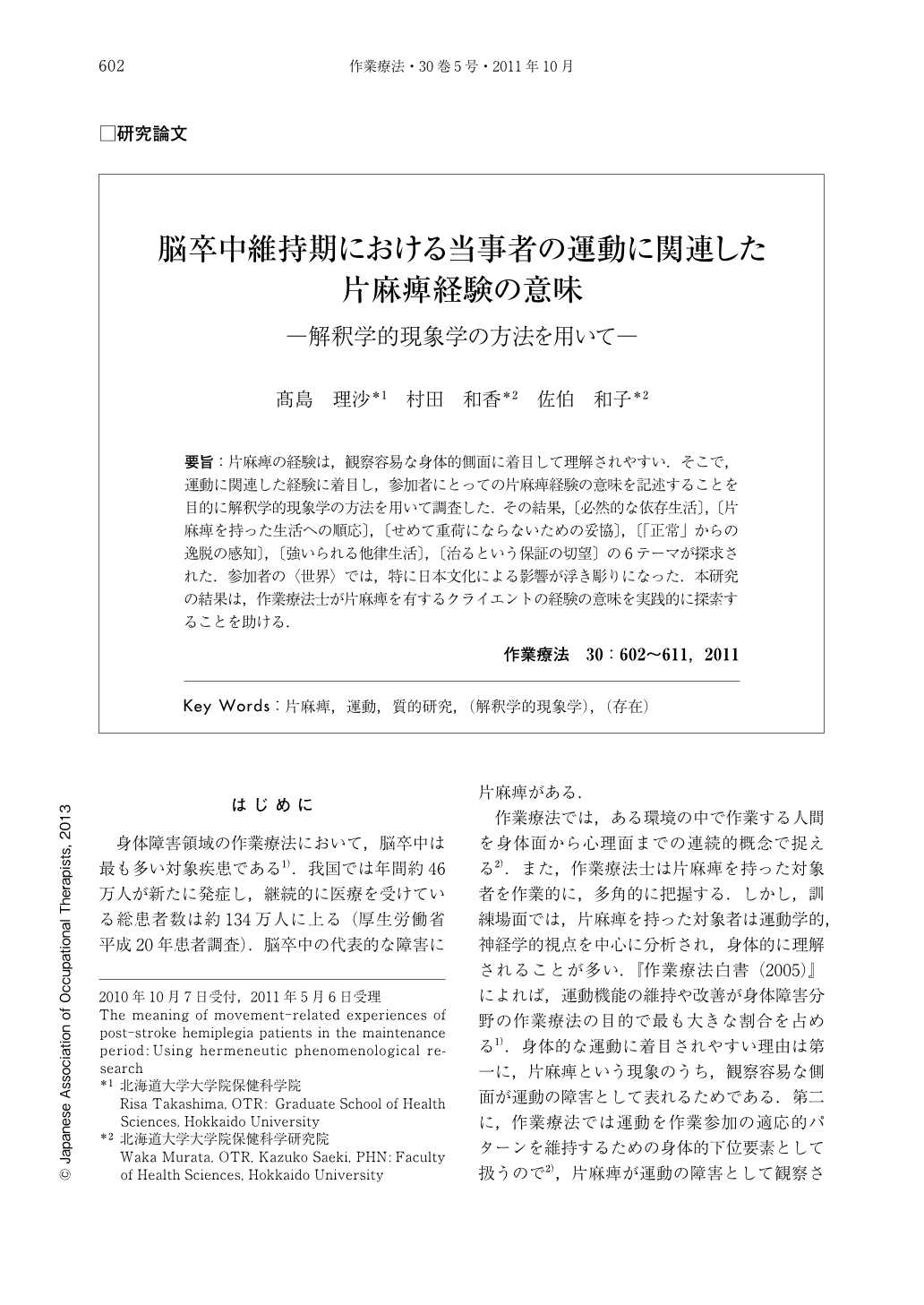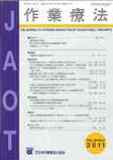Japanese
English
- 販売していません
- Abstract 文献概要
- 1ページ目 Look Inside
- 参考文献 Reference
- サイト内被引用 Cited by
要旨:片麻痺の経験は,観察容易な身体的側面に着目して理解されやすい.そこで,運動に関連した経験に着目し,参加者にとっての片麻痺経験の意味を記述することを目的に解釈学的現象学の方法を用いて調査した.その結果,〔必然的な依存生活〕,〔片麻痺を持った生活への順応〕,〔せめて重荷にならないための妥協〕,〔「正常」からの逸脱の感知〕,〔強いられる他律生活〕,〔治るという保証の切望〕の6テーマが探求された.参加者の〈世界〉では,特に日本文化による影響が浮き彫りになった.本研究の結果は,作業療法士が片麻痺を有するクライエントの経験の意味を実践的に探索することを助ける.
When occupational therapists try to understand the experiences of hemiplegia related to movement, they are apt to pay attention to the easily observable physical aspects. Therefore we noted the hemiplegic experiences related to movement and aimed to ascribe meaning to the experiences using hermeneutic phenomenology. As a result, the following six themes emerged: “Life with inevitable dependence”, “Adaptation to life with hemiplegia” “Unwillingness to try something for fear of becoming a heavier burden on carers”, “Self-perception of deviation from ‘normal'”, “Life with imposed heteronomy” and “Craving an assurance of recovery”. Japanese culture is significant “in-the-world” of the participants. The results of this study can help occupational therapists find meaning in the experiences of clients with hemiplegia.

Copyright © 2011, Japanese Association of Occupational Therapists. All rights reserved.


